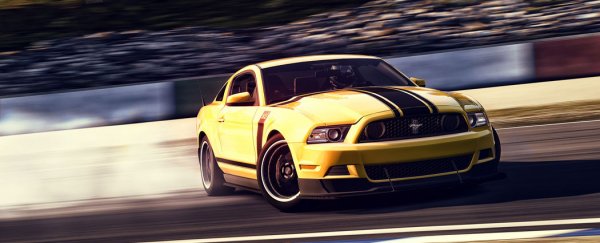Converting the energy of a moving automobile into an efficient power source for that same automobile is one of the Holy Grails of motor transport, and new research suggests an important part of the solution could be to look at the friction generated between car tyres and the road itself.
Engineers from the University of Wisconsin-Madison in the US have developed a nanogenerator that's capable of harvesting the energy produced by the friction of a tyre rolling along the ground.
To test this, the team attached an electrode to one of the tyres on a toy car - a remote-control Jeep Wrangler - and used it to harness the electrical charge produced when that segment of the tyre came into contact with the ground.
The kind of charge generated is called the 'triboelectric effect', which results from contact between two dissimilar objects - in this case the ground's surface rubbing against the vehicle's wheels. The changing electric potential as the two surfaces come into contact is captured by the tyre electrode and transmitted to the nanogenerator on board the vehicle, which is capable of storing it as energy.
Given that the friction created by driving on any kind of tactile road surface is an inevitable consequence of all motor transport (well, until those imminent flying cars finally hit the streets, that is), the least we can do is find an outlet for all that potential energy, right?
"Regardless of the energy being wasted, we can reclaim it, and this makes things more efficient," Xudong Wang, lead author of the research, said in a press release. "I think that's the most exciting part of this, and [it's] something I'm always looking for: how to save the energy from consumption."
How efficient is the technique? Well, it won't be replacing gas or electric charging stations any time soon, but with Wang's team hitting a peak energy conversion efficiency of 10.4 percent - meaning they were able to recapture and use 10.4 percent of their test vehicle's spent energy - the implications for the electric and hybrid motor industry could be enormous.
Especially when you consider that the researchers' findings, which are published this month in Nano Energy, suggest that the amount of energy harnessed is directly related to the weight of the car. In other words, the method will directly scale to real vehicles (meaning Barbie and Ken won't be the sole beneficiaries).
"The friction between the tire and the ground consumes about 10 percent of a vehicle's fuel," Wang said. "That energy is wasted. So if we can convert that energy, it could give us very good improvement in fuel efficiency… There's big potential with this type of energy. I think the impact could be huge."
